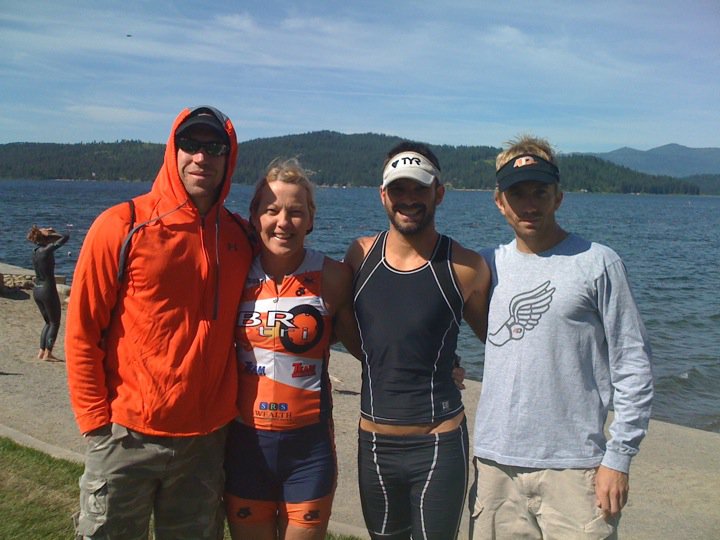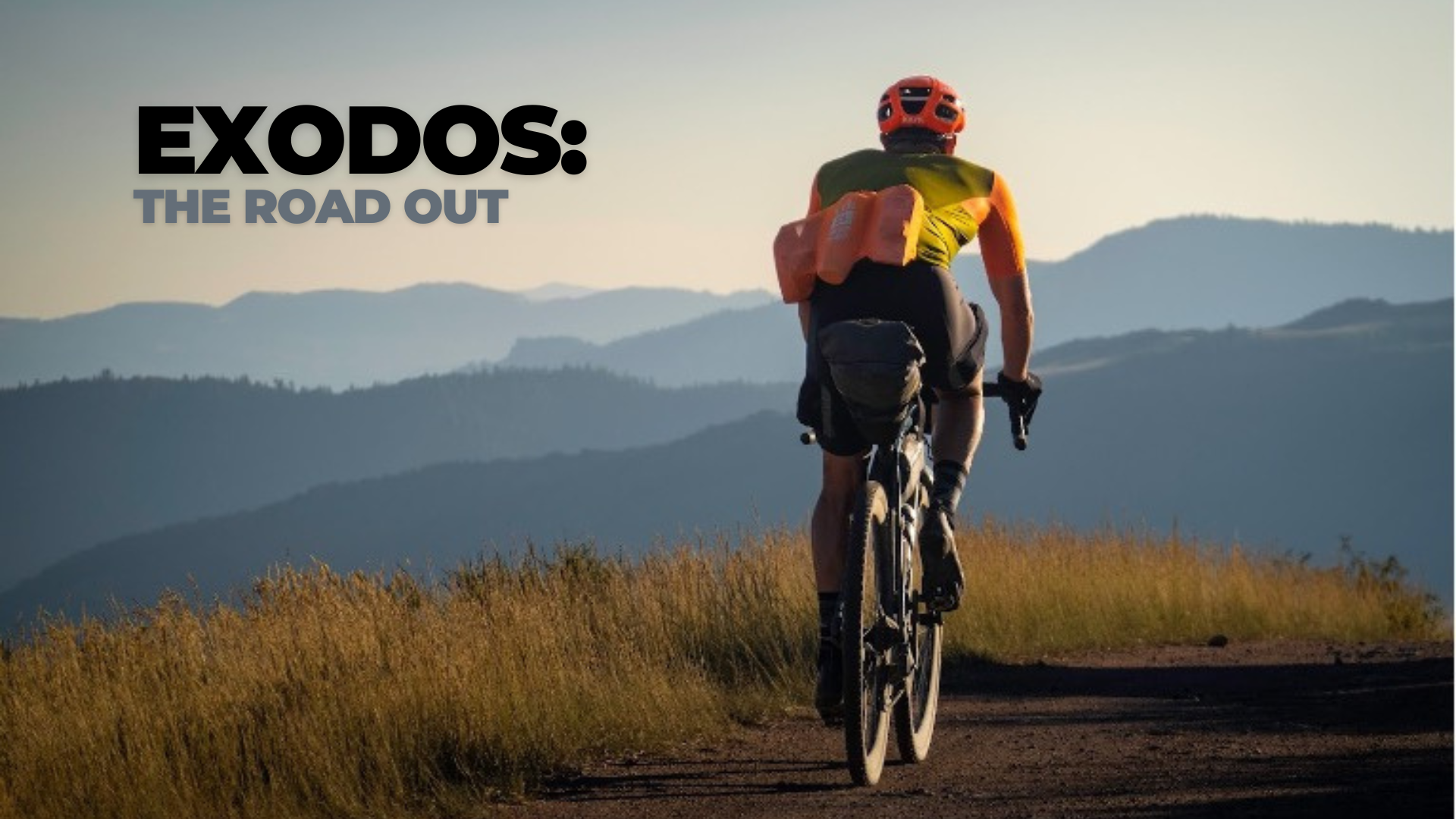
ARTICLE AUTHOR:
4D Coach Dustin Drewes, PT, DPT
Have you ever found yourself having to come out of the aero position because your neck, shoulders, or low back are on fire? Have you had to spend a significant portion of a race out of the aero position due to severe discomfort? Problems with acclimation to the aero position can end up costing you time on the race course. Every second spent sitting tall out of position is an aerodynamic penalty. Your decision to come out of the aero position should be measured against this penalty. Facing road hazards, eating, and turning are great examples of times when coming out of position are necessary.
Riding long periods of time in the aero position is far from an easy task, and it requires a combination of muscular fitness, mobility, and skill. In this article, we will explore the complexities that influence our ability to ride in the aero position for long periods of time, whether that is sprint distance tri or Ironman. If you’re having trouble staying in the aero position due to pain, the issues addressed below may help you get acclimated to riding in aero for longer and help you to a faster bike split!
The physical demands of getting aero
Before we get into potential solutions, let’s start by breaking down the aero position and the demands being placed on our bodies. The aero position is often compared to holding a plank. While there are similarities to planking, pedaling in the aero position is altogether its own unique activity with specific demands of the neck, shoulders, and trunk. It is important to remember that these specific factors can change based on your bike fit and how you specifically ride.
Starting from the top, did you know your head weighs around 11 pounds? Add the weight of your aero helmet and you’ve got a significant amount of weight you’re asking your neck to hold unsupported. The neck extensors and deep neck flexors are working hard to hold up our heads while also helping keep our eyes on the road. The endurance of these neck extensors are a key factor to avoiding neck pain and also being able to see the road while in the aero bars. The stack and tilt of your aerobars and head position influences how much these muscles are working. Generally, the lower you go up front, the more demand there will be on the neck.
In order to have a portion of our upper body weight supported on our elbows, we are calling on all of the muscles that stabilize the shoulder joint . This includes our rotator cuff muscles, traps, lats, deltoids, and deep scapular muscles. Weakness or irritation in these muscles may lead to pain in the shoulder area or down the arm. Considering the swim in addition to the bike, there must be sufficient strength and endurance of the shoulders.
We also have to have fitness in the core muscles that support the trunk & spine, and allow for space for breathing. The core muscles help keep our trunk and pelvis stable while transferring power to the pedals. This includes the back extensors which are working eccentrically as we lean forward. If these muscles fatigue, there could be pain in the low back and we may see excessive movement in the pelvis.
All of these muscles are working together as one system to achieve the task of pushing the pedals while keeping the frontal area as small as possible. Simple, but not easy.
Bike Fit
If you’re struggling to hold your aero position, you may consider seeking professional help for a bike fit. If there’s been any change in equipment such as a new bike, or a change in yourself such as a long break between triathlon seasons, then you may benefit from getting your fit evaluated. The aero position has perhaps the most adjustment of any bike type which is both a benefit and a challenge. Wide adjustability helps you dial in your position, but it can also lead to adjustments that are not in line with your needs.
Here’s a non-exhaustive list of adjustments that can be made to the that affects your comfort, power output, and aerodynamics on the bike:
- Saddle position: height, tilt, fore-aft, shape, width
- Cleat position: fore-aft, rotation, width of stance (Q factor), stack, tilt
- Stem length, tilt
- Aero bar pad width, tilt, fore-aft, shape
- Aero bar extension length, width, tilt, rotation, shape, stack
How much adjustability you have depends on your equipment. Some brands of bikes and handlebars have differing levels of adjustment. The goal in these adjustments is to find the position that considers your unique mobility, strength, and special considerations that allows you to adapt to the aero position for the duration of your targeted race. Your bike fit is a great starting place if you’ve never had one or a good thing to come back to if it’s been some time since working with a fitter.
Acclimation
When it comes to adapting to the aero position, there’s one thing above all else you must do to acclimate: SPEND TIME RIDING IN THE AERO POSITION. This may sound obvious, but if you’re training out of position, then you’re not doing yourself any favors. Spend as much time as you can in your aero bars. If you’re early in the process, you may not be able to stay there long at all, and that’s ok. If you have intervals on the schedule, then try doing your intervals in position and rest sitting up. All that matters is you’re accumulating time in the aero position. Keep track of your progress in how long you can tolerate the aero position each week. Perhaps your shoulders hurt at the 1 hour mark and then next week it’s 1.5 hours. This is a sign you’re adapting and making progress. The longer the race, the longer you should give yourself to adapt. For those racing 5+ hours on the bike, this will likely require months of training in the aero position.
Off the bike
If you look closely at anyone riding in aero bars, you’ll notice that it mimics the classic “poor sitting posture” that has been associated with all kinds of musculoskeletal issues (this is unproven and perhaps a topic for another day). Rounded shoulders, forward head, thoracic kyphosis, excess lower cervical flexion and upper cervical extension are all hallmarks of “poor posture”. Whether or not these features cause injuries, we can’t deny the increased demand placed on muscle groups we discussed.
When it comes to things you can do off the bike, I’ll place exercises into two categories: strength exercises to improve tolerance and postural exercises that oppose the position. A good foundation of strength in the muscle groups we discussed will help you hold yourself in the aero position.
For postural exercises, these are good for days that you’re feeling rough from pushing your limits of the position. These exercises are designed to counteract the forward and closed nature of the aero position and help you open up the shoulders, chest, neck, spine, and hips. The postural exercises would be best performed after riding but would also work great any time.
Occupational Considerations
When considering our aero position acclimation we should also think about where we spend most of our time when we are not on the bike. If your occupation involves extended periods of sitting or heavy use of the shoulders, then it’s possible that your muscles are becoming over-stretched and over-worked before you ever climb onto the bike. Extended sitting throughout the day places similar postural demands as the aero position, so the postural exercises we shared may be of greater benefit to you. I’m not here to tell you to find a new job or buy a standing desk, but I will suggest breaking up sitting with walking breaks or sneaking a quick 2-minute mobility session. Bring a foam roller to work and keep it in reach.
Final thoughts
There’s clearly a lot of factors that influence our ability to tolerate riding in the aero position for extended periods of time. Determining which specific factors are limiting your ability to tolerate the position requires some digging into your history, bike fit, and physical attributes. If you’re struggling with the aero position, talk to your coach, schedule a bike fit, and/or try some of these tips. Remember, the faster you go the sooner you get to PARTY! If you suspect your pain on the bike may be due to something more serious, then you should seek the advice of your doctor or a licensed physical therapist before attempting these exercises.





